https://habr.com/en/company/spbifmo/blog/488444/- ITMO University corporate blog
- Studying in IT
- Offices of IT companies
ITMO University is home to a large number of labs that specialise on everything from bionics to quantum optics. Today we’ll take a look at the cyber-physical systems lab and its projects.
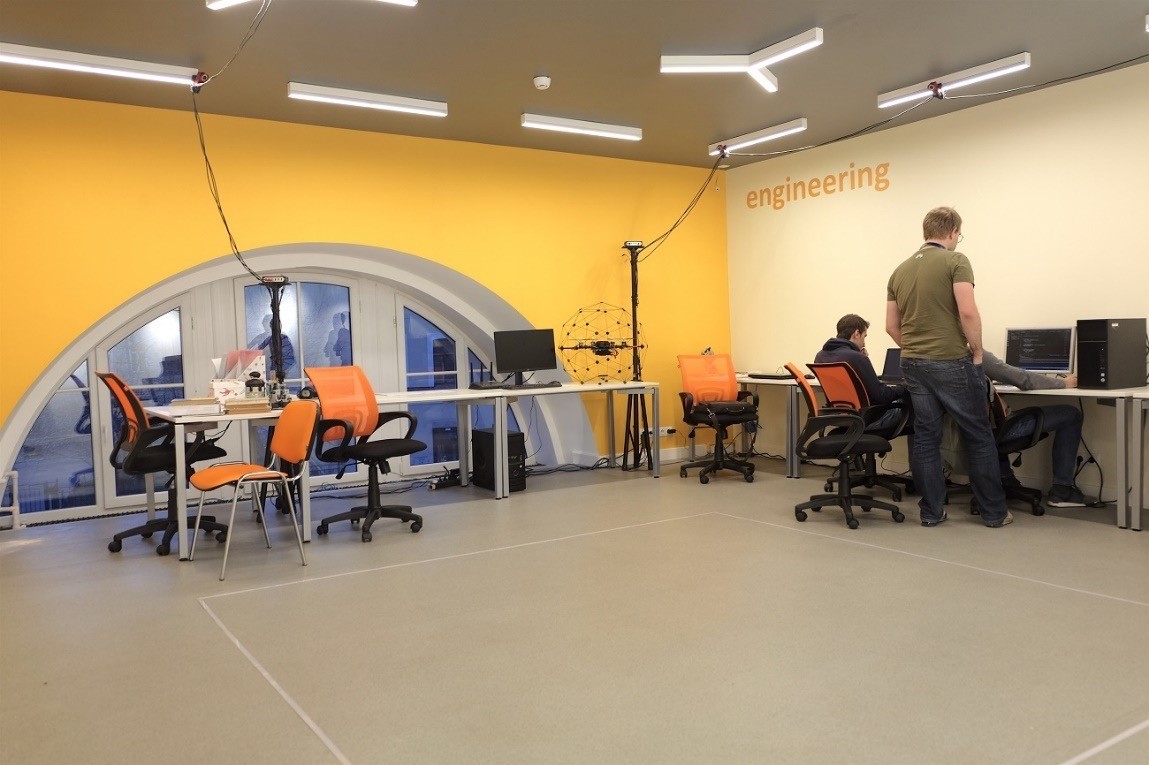
A short overview
Cyber-physical systems are, as the name suggests, complex software-driven toolchains. They achieve high levels of integration and automation with the help of 3D printing, wireless communication, augmented reality and other high-tech innovations. A good example of a cyber-physical system is a self-driving car.
The cyber-physical lab at ITMO University is a space for interdisciplinary experimentation. It attracts students from a wide range of departments, including, but not limited to computer science, cybersecurity and engineering. At the core of the concept is a free exchange of ideas, opinions and knowledge.
Our equipment
The lab currently occupies the space that used to belong to the department of applied and theoretical mechanics. It was redesigned in accordance with students’ wishes — and is therefore fit for a wide range of activities. The main room of the lab contains a robotics test site alongside a small number of workspaces.
This space is used to experiment with automated multi-agent systems and test robots’ navigation skills. Sometimes special indoor drones are deployed to assist with the troubleshooting.

The ceiling cameras capture drones’ movement and provide feedback necessary for their safe deployment.
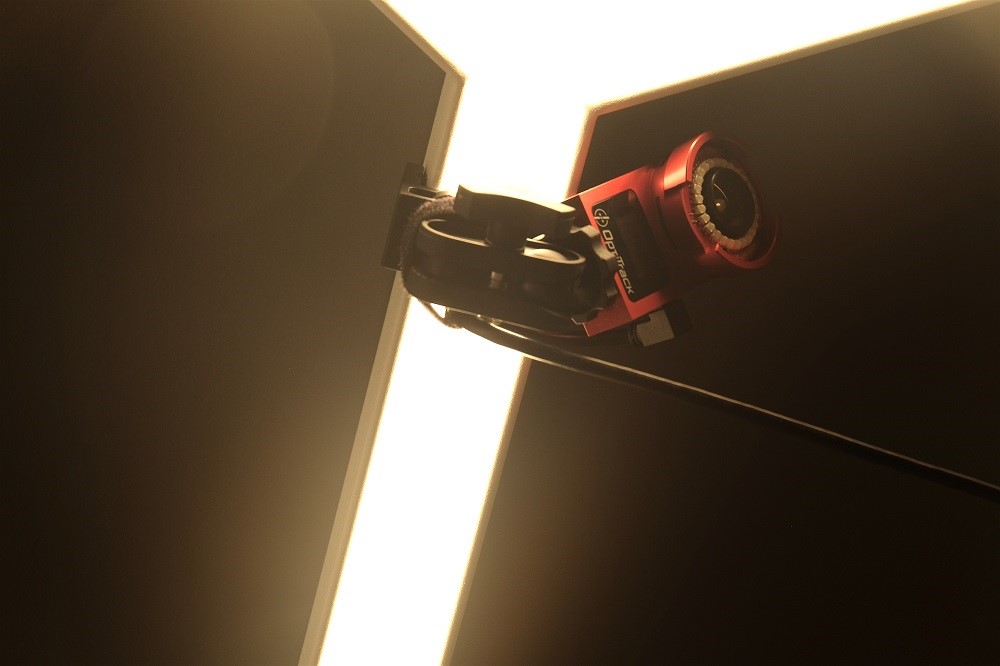
A modest presentation space is separated from the working area by a folding wall. It’s got everything you’d need for a seminar: chairs, a projector, a screen and a whiteboard.

It comfortably seats a small group of students.
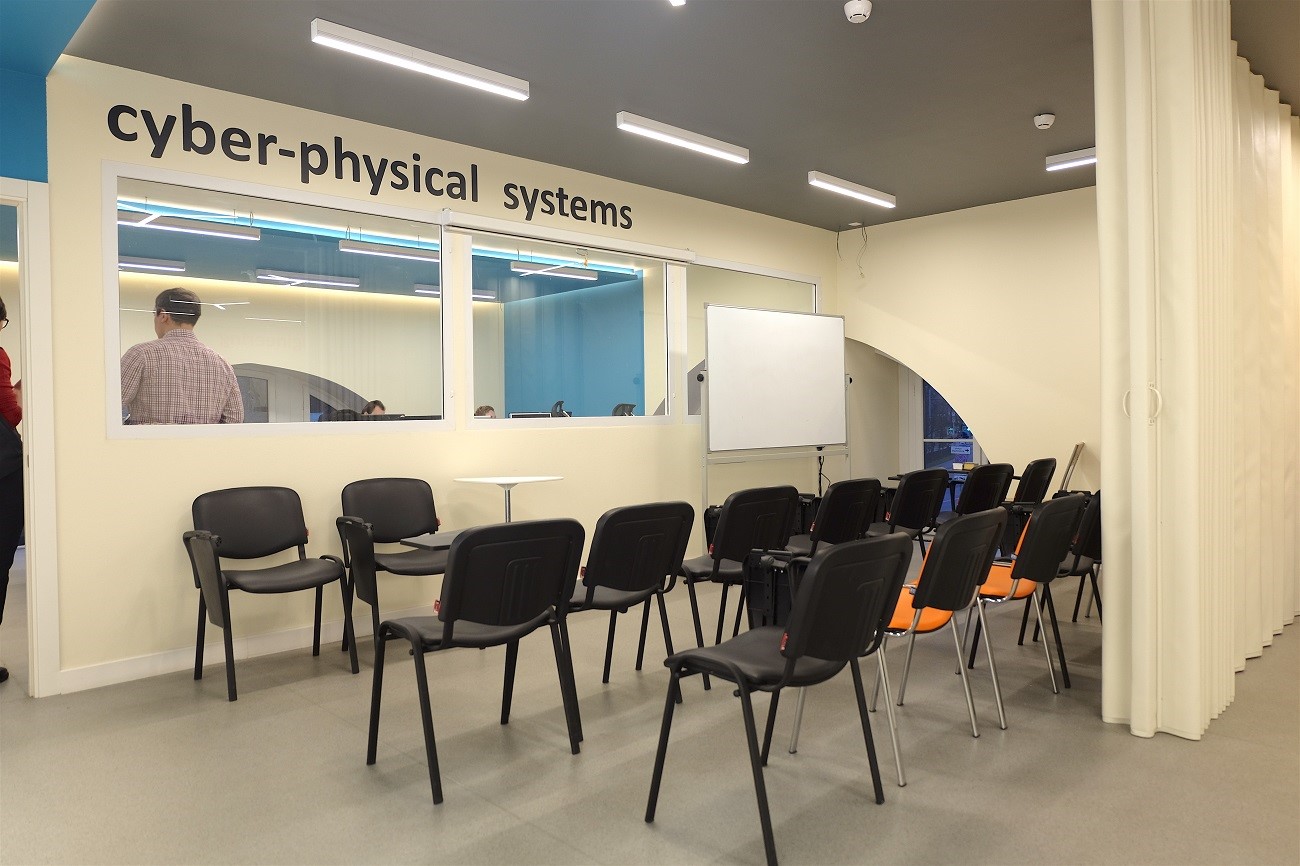
The windowed partition wall (pictured above) hides an office area with desktop computers and laptops.
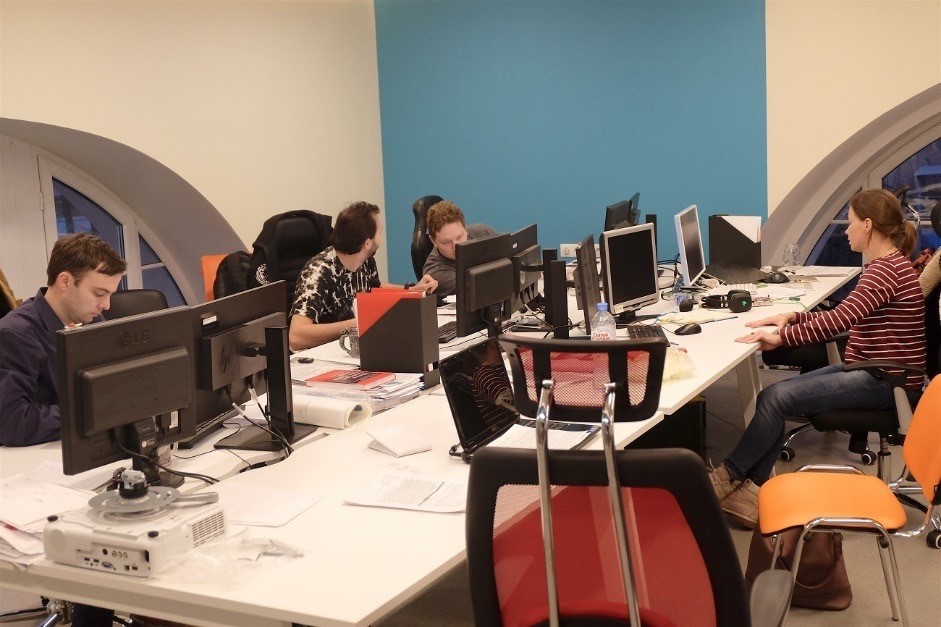
The huge whiteboard wall helps residents visualise complex algorithms and business processes.
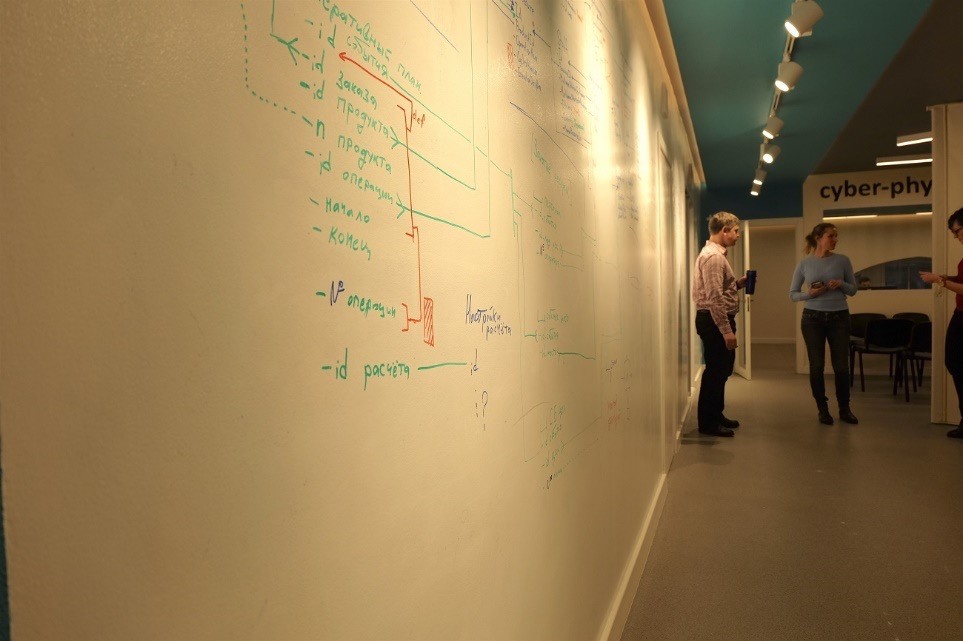
The coffee break area houses a traditional blackboard, so that no ideas ever go to waste.

To make the space more functional, we’ll soon be placing a TV in the break area.
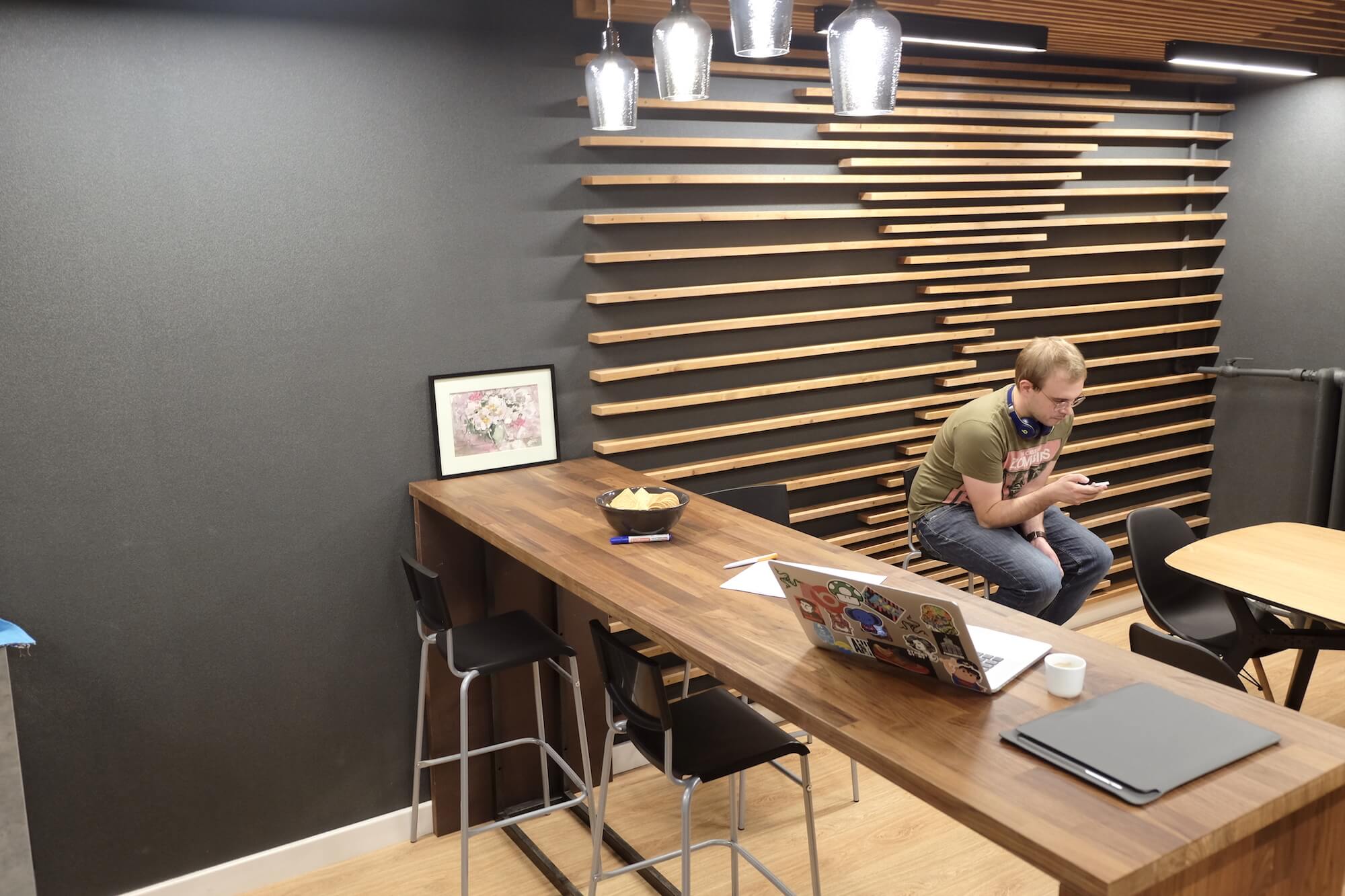
Our projects
The cyber-physical systems lab is home to a number of projects.
Some of our staff are working on a set of algorithms to optimize the assembly of locomotives. Technologists make sure all the manufacturing variables are accounted for, mathematicians develop the algorithms, and programmers create the software that brings it all to life.
We’re also building a flight simulator for professional pilot training. This complex cyber-physical system closely simulates all the processes that occur on an actual plane, and visualises them using virtual reality tech. We’re even working on a special seat that imitates high-g conditions.
Last, but not least, over the years our lab has been home to a number of big commercial projects. As a part of the university’s “
Industry 4.0” program, our staff has taken on the development of a smart automation system for
Diakont JSC. The aim is to automate every possible process: from sourcing and prototyping to final assembly and sales. To tackle this task, our staff is developing new optimization algorithms that incorporate neural networks and artificial intelligence solutions.
Shared governance
The lab is governed by a board of elected officials from our computer science and control systems “megadepartment”. Its members are distinguished scientists with Ph.Ds in computer science, manufacturing automation, cybersecurity and engineering. Majority support is required for the board to approve a new lab project. The responsibility for the undertaking falls on the shoulders of the board member whose professional competencies most closely align with the subject matter.
A number of students and researchers from different departments are then picked for the project’s execution. They work together to ensure that everything is accounted for by the time it’s too late to go back to the drawing board. As such, this lab was not only the university’s first large-scale interdisciplinary project, but also the first attempt to implement shared governance.
Further reading:








